- The process of creating a drug - May 23, 2023
- How do scientists model mental disorders in animals? - May 23, 2023
Abstract
Valerophenone, also known as pentanophenone, is an aromatic ketone where a benzene ring is substituted with a pentanoyl group. This compound serves as a vital precursor in the synthesis of α-PVP, a stimulant drug. The present document offers a thorough exploration of Valerophenone, physical and chemical properties, relevant chemical information, various synthesis techniques, closing statements, and a comprehensive bibliography.
General Information About Valerophenone [1-5]
Other synonyms names of Valerophenone are: Butyl phenyl ketone; Pentanophenone; 1-Phenyl-1-pentanone; 2-propylacetophenone; 1-phenyl-pentan-1-one; 4-methyl butyrophenone
IUPAC Name of Valerophenone: 1-phenylpentan-1-one
CAS number is 1009-14-9
Trade name is Valerophenone
Physico-Chemical Properties of Valerophenone [1-5]
- Molecular Formula C11H14O
- Molar Weight 162.23 g/mol
- Boiling point 244-245 °C
- Melting Point -9 and -9.4 °C
- Refraction index 1.5143
- Density 0.975-0.978 g/mL
- Solubility: in water 137.3 mg/L at 25 °C; soluble in organic solvents
- Color/Form: colourless liquid; light yellow
Structural formula present on Figure 1.
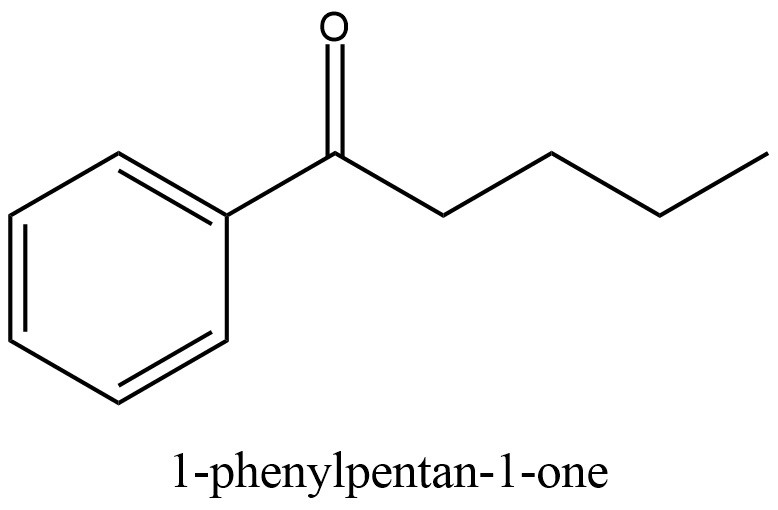
Liquid possible of the Valerophenone can be seen in the picture provided in Figure 2.
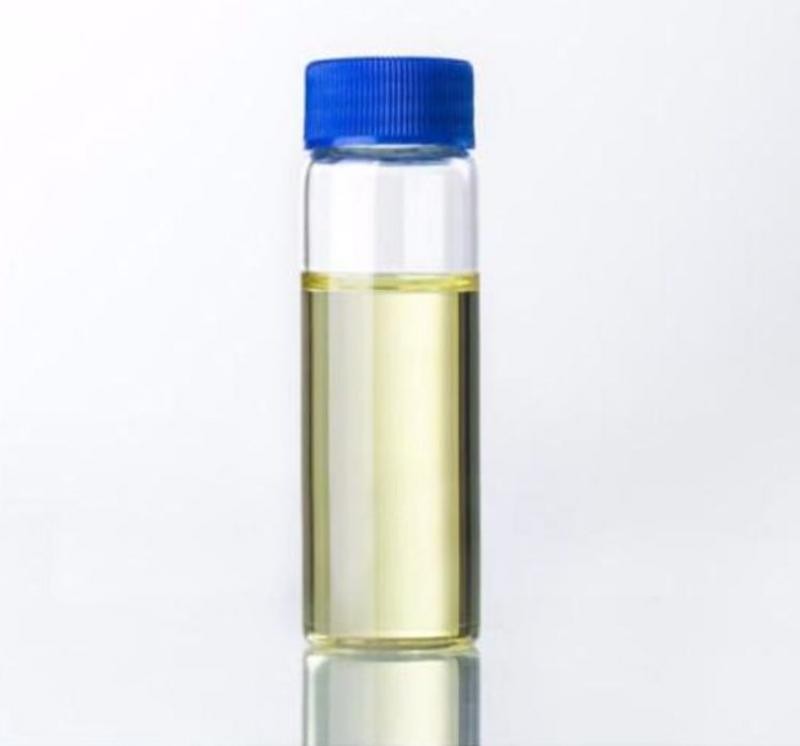
Commercial Valerophenone can be seen in the picture provided in Figure 3.

Chemical Information of Valerophenone [5-18]
Valerophenone, a compound characterized by a benzene ring substituted with a pentanoyl group, is a derivative of trifluoroacetic acid (TFA) that serves as a potent antagonist for the histamine H1 receptor. Its binding to receptor cells effectively hinders the action of histamine, resulting in the inhibition of additional mediators like prostaglandins and leukotrienes. Notably, Valerophenone demonstrates remarkable inhibitory effects on polymerase chain reactions (PCR), chemiluminescent reactions, and analytical methods employing constant pressure. Additionally, it hampers the formation of substrate films, thereby potentially increasing light emission in chemiluminescent reactions. Studies have established Valerophenone’s efficacy as an inhibitor of human recombinant histamine H1 receptors, particularly at concentrations below 10 μM. This inhibition is believed to be attributed to the compound’s ability to form intramolecular hydrogen bonds with the hydroxyl group located at C-5 on the benzene ring. Furthermore, Valerophenone acts as an inhibitor of the enzyme carbonyl reductase.
Chemical reactions
The Grignard reaction is a fundamental organic chemical process that involves the interaction between a Grignard reagent and a ketone compound. Grignard reagents are organometallic compounds typically synthesized by combining alkyl or aryl halides with magnesium metal in the presence of an ether solvent. In the context of the Grignard reaction with ketones, the Grignard reagent acts as a nucleophile, attacking the electrophilic carbon atom within the ketone’s carbonyl group. This initial step leads to the formation of a carbon-carbon bond connecting the carbon atom from the Grignard reagent with the carbonyl carbon atom of the ketone. Consequently, a new carbon-carbon bond is established, and an alkoxide intermediate is generated. However, this alkoxide intermediate is unstable and readily reacts with water or an acidic source, resulting in the desired final product. When hydrolyzed with water, the outcome is an alcohol, while an acidic source leads to the formation of the corresponding carboxylic acid. The Grignard reaction with ketones finds extensive use in organic synthesis, enabling the introduction of new functional groups and the creation of intricate carbon frameworks. It provides a versatile and efficient method for constructing various organic compounds, including alcohols, carboxylic acids, and their derivatives. Given the sensitivity of Grignard reagents to air and moisture, it is crucial to handle them with care, ensuring reactions are carried out under anhydrous conditions. Figure 4.

The Darzen condensation, also referred to as the Darzen glycidic ester condensation, is a chemical transformation that involves the condensation of an α,β-unsaturated acid chloride or anhydride with an alkoxide or phenoxide nucleophile. This reaction was initially discovered by the Swiss chemist Victor Darzen in the early 20th century. In the context of the Darzen condensation, the acid chloride or anhydride undergoes a reaction with the nucleophile, leading to the formation of a β-hydroxy ester or β-hydroxy ketone. The reaction proceeds by the nucleophile attacking the electrophilic carbonyl carbon of the acid chloride or anhydride, subsequently resulting in the elimination of a chloride ion or anhydride molecule. This step leads to the formation of a cyclic intermediate, which then undergoes an intramolecular nucleophilic attack by the alkoxide or phenoxide group. As a consequence, the desired β-hydroxy ester or β-hydroxy ketone is formed. The Darzen condensation serves as a versatile method for synthesizing β-hydroxy esters and β-hydroxy ketones, which are essential building blocks in organic synthesis and can be further modified to yield a wide range of functional groups. This reaction can be conducted under mild conditions and provides good control over regioselectivity and stereochemistry. Figure 5.
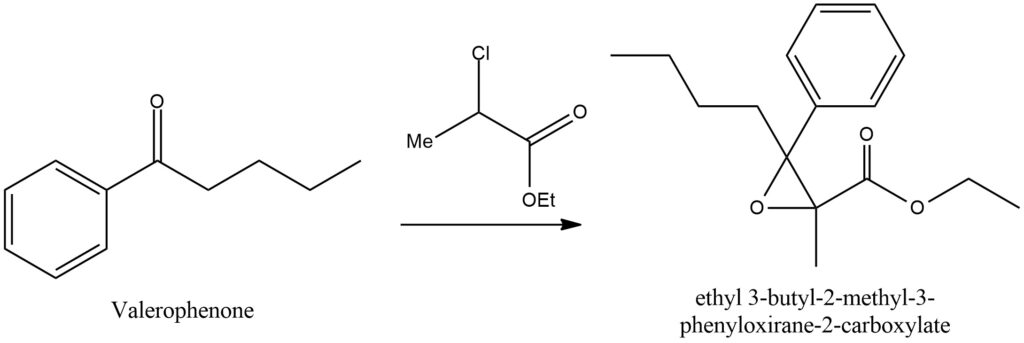
Figure 5. Valerophenone may participate in the Darzen condensation reaction.
Ketone hydrogenation, also referred to as ketone reduction, is a chemical process that involves the addition of hydrogen (H2) to a ketone functional group, resulting in the formation of an alcohol. This reaction is widely employed in organic synthesis and is typically catalyzed by transition metal catalysts like palladium, platinum, or nickel. In the context of ketone hydrogenation, the ketone molecule undergoes a reduction in the presence of a hydrogen source and a suitable catalyst. Molecular hydrogen (H2) gas is commonly utilized as the hydrogen source, and the catalyst facilitates the activation of hydrogen and its addition across the ketone carbonyl group. As a consequence, the ketone is converted into an alcohol, with the incorporation of a new hydrogen atom. Ketone hydrogenation is a versatile and valuable transformation in organic chemistry as it allows for the selective reduction of ketones to alcohols while preserving the integrity of other functional groups within the molecule. By adjusting the reaction conditions such as temperature, pressure, catalyst choice, and solvent, it is possible to control the selectivity and stereochemistry of the hydrogenation process. The hydrogenation of ketones finds applications in various fields, including the synthesis of pharmaceuticals, fine chemicals, and derivatives of natural products. It enables the conversion of carbonyl groups into more versatile and functional alcohol moieties, which can be further manipulated in subsequent chemical transformations. It is important to note that ketone hydrogenation is typically performed under controlled conditions to achieve the desired regioselectivity and avoid over-reduction. The choice of catalyst and reaction parameters should be carefully considered based on the specific ketone substrate and the desired product. Figure 6.

Ketones undergo a reaction with hydroxylamine, resulting in the formation of ketoximes while releasing water as a byproduct. This chemical transformation, known as ketoximation, involves the addition of hydroxylamine (NH2OH) to the carbonyl group of the ketone. This addition leads to the creation of a C=N bond and converts the carbonyl oxygen into a hydroxyl group. During ketoximation, the nitrogen atom of hydroxylamine, possessing a lone pair of electrons, attacks the electrophilic carbon atom within the ketone’s carbonyl group. This initiates the formation of an intermediate compound, wherein the oxygen of the carbonyl group forms a bond with the nitrogen atom. Subsequently, water is eliminated from this intermediate, resulting in the formation of the ketoxime product. Ketoximes exhibit unique chemical properties due to the presence of the C=N bond. They can serve as versatile intermediates in a variety of organic transformations, including the synthesis of amides, oximes, and other functional groups. Figure 7.

When ketones react with hydrazine, the formation of either hydrazones or azines occurs depending on the reaction conditions. The ratio of hydrazine to ketone determines the product outcome, with a 1:1 ratio resulting in hydrazones and a 1:2 ratio leading to azines. In the case of hydrazone formation, one molecule of hydrazine reacts with one molecule of the ketone. The nitrogen atoms of the hydrazine attack the carbonyl carbon of the ketone, resulting in the formation of a C=N double bond and the conversion of the carbonyl oxygen into a hydrazone group. On the other hand, azine formation occurs when two molecules of hydrazine react with one molecule of the ketone. In this scenario, both nitrogen atoms of the hydrazine participate in the reaction, leading to the formation of a C=N double bond in the ketone and the conversion of the carbonyl oxygen into an azine group. Figure 8.
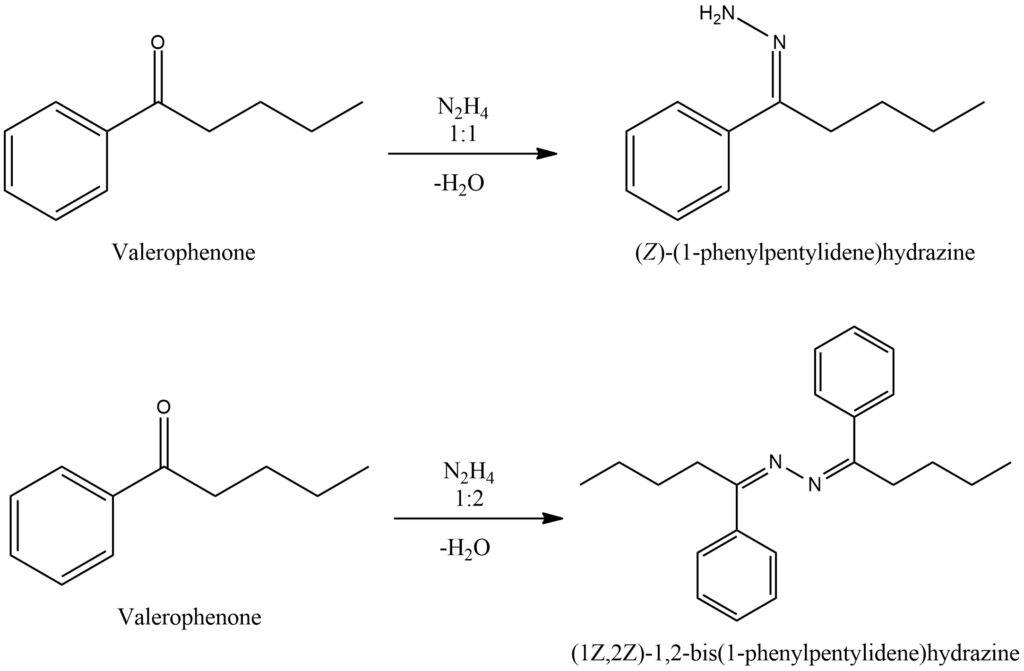
The Leuckart-Wallach reaction is a chemical transformation that facilitates the conversion of a carbonyl compound, such as a ketone or aldehyde, into an amine. This reaction is widely utilized for the synthesis of primary and secondary amines. In the Leuckart-Wallach reaction, the carbonyl compound undergoes a reaction with formic acid (HCOOH) and an amine, commonly ammonium formate (NH4HCO2), under elevated temperatures. The reaction progresses through a series of steps, which includes the formation of an imine intermediate, followed by subsequent reduction and rearrangement processes. Eventually, the carbonyl group is transformed into an amine group. The specific reaction conditions, including temperature, reaction time, and the choice of catalyst, can significantly impact the selectivity and efficiency of the Leuckart-Wallach reaction. The inclusion of appropriate catalysts, such as Raney nickel or platinum on carbon, is often employed to enhance the reaction rate and yield. Figure 9.
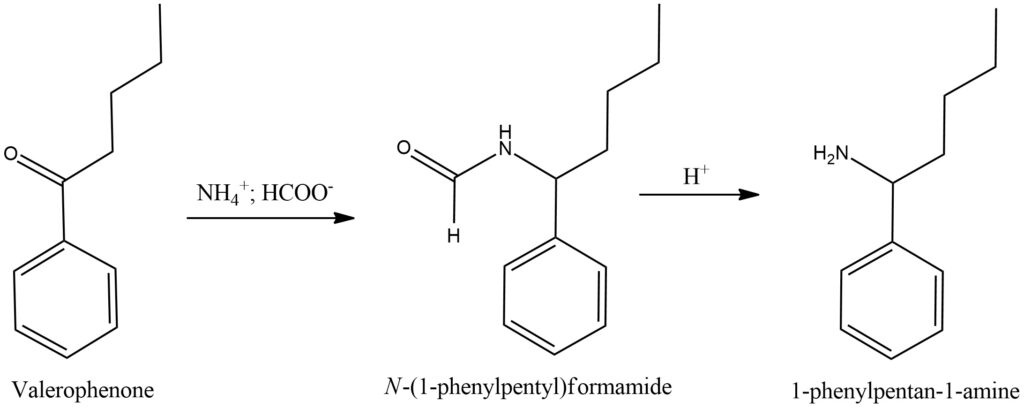
Keto-enol tautomerism is a chemical phenomenon that involves the interconversion between two constitutional isomers, known as keto and enol forms. This tautomerism occurs in compounds that contain a carbonyl group (keto) and a hydroxyl group attached to an adjacent carbon (enol). The interconversion between the keto and enol forms is driven by the migration of a proton and the rearrangement of electrons within the molecule. In the keto form, the carbonyl group is predominant, with a double bond between the carbon and oxygen atoms. However, under certain conditions, such as the presence of a catalyst, heat, or specific solvents, the keto form can convert into the enol form. In the enol form, the double bond shifts to the adjacent carbon, forming a hydroxyl group and an alkene bond. The interconversion between the keto and enol forms is an example of tautomeric equilibrium. The equilibrium position is influenced by factors such as temperature, solvent polarity, and the stability of each tautomer. In most cases, the keto form is more stable due to the resonance stabilization provided by the carbonyl group. However, in some instances, the enol form can be favored if it possesses conjugation or intramolecular hydrogen bonding, which increases its stability. Keto-enol tautomerism has significant implications in organic chemistry. It affects the reactivity, acidity, and chemical behavior of compounds. The interconversion between tautomers can influence reaction rates, product formation, and the presence of different functional groups. Understanding and controlling keto-enol tautomerism is essential for designing and predicting the behavior of molecules in various chemical processes. Figure 10.

Formation of imines from ketones is a chemical process that involves the reaction between a ketone and a primary amine, resulting in the formation of an imine. This reaction is known as imine formation or imination. In the imine formation, the carbonyl group of the ketone reacts with the amino group (-NH2) of the primary amine. The reaction proceeds through a nucleophilic addition-elimination mechanism. Initially, the lone pair of electrons on the nitrogen atom of the primary amine attacks the electrophilic carbon atom of the ketone’s carbonyl group, resulting in the formation of a tetrahedral intermediate. This intermediate compound then undergoes an elimination step, where a water molecule is expelled, leading to the formation of an imine. The imine consists of a carbon-nitrogen double bond (C=N), with the nitrogen atom bonded to an alkyl or aryl group derived from the primary amine. The imine formation reaction can be catalyzed by acid or base. Acidic conditions favor imine formation, while basic conditions promote enamine formation, which involves the addition of a proton to the nitrogen atom of the imine, leading to the formation of an enamine. Imines are valuable intermediates in organic synthesis and have diverse applications. They can serve as building blocks for the synthesis of various compounds, such as pharmaceuticals, agrochemicals, and dyes. Additionally, imines exhibit important biological activities and are utilized as ligands in coordination chemistry. Figure 11.

Formation of hemiketals is a chemical process that involves the reaction between an alcohol and a carbonyl compound, resulting in the formation of a hemiketal. Hemiketals are functional groups that contain a carbon-oxygen-carbon (C-O-C) linkage. In the formation of hemiketals, an alcohol molecule reacts with a carbonyl compound, such as an aldehyde or ketone. The reaction proceeds through a nucleophilic addition-elimination mechanism. Initially, the lone pair of electrons on the oxygen atom of the alcohol attacks the electrophilic carbon atom of the carbonyl group, forming a tetrahedral intermediate. Subsequently, an intramolecular proton transfer occurs, leading to the elimination of a water molecule. This results in the formation of a hemiketal, where the oxygen atom of the alcohol becomes bonded to the carbon atom of the carbonyl group, forming a new C-O-C linkage. The formation of hemiketals is reversible, and the equilibrium position depends on the stability of the hemiketal and the starting materials. The equilibrium can be influenced by factors such as temperature, concentration, and the presence of catalysts. Hemiketals are important intermediates in organic chemistry and have various applications. They can undergo further reactions, such as acid-catalyzed cyclization or rearrangement, to form more complex molecules. Hemiketals are commonly found in carbohydrate chemistry, where they play a crucial role in the formation of cyclic sugar structures. It’s worth noting that the conversion of hemiketals to stable ketals is also possible through a subsequent reaction with an alcohol molecule. This process involves the formation of a new carbon-oxygen-carbon linkage and results in the protection of the carbonyl group. Figure 12.

With strong oxidizing agents, ketones can undergo oxidation to form carboxylic acids. However, ketones are generally more resistant to oxidation compared to aldehydes and primary alcohols. Oxidation of ketones typically requires the use of vigorous conditions, including strong oxidizing agents and elevated temperatures. During the oxidation of ketones, the carbon-carbon bond in the ketone undergoes cleavage, leading to the formation of a mixture of carboxylic acids. The resulting carboxylic acids have a lesser number of carbon atoms compared to the parent ketone. This reduction in carbon atoms occurs because the cleavage of the carbon-carbon bond in the ketone backbone results in the loss of one carbon atom. Strong oxidizing agents commonly used for ketone oxidation include potassium permanganate (KMnO4), chromic acid (H2CrO4), and Jones reagent (CrO3/H2SO4). These oxidizing agents provide the necessary energy to break the carbon-carbon bond and facilitate the conversion of the ketone into carboxylic acids. The oxidation of ketones is an important transformation in organic chemistry and has several applications. It allows for the conversion of ketones into carboxylic acids, which are versatile compounds used in various industries, including pharmaceuticals, polymers, and flavors. The selectivity of the oxidation reaction can be influenced by the choice of oxidizing agent, reaction conditions, and the presence of other functional groups in the molecule. It is important to note that the oxidation of ketones requires caution and careful control of reaction conditions, as strong oxidizing agents can be hazardous and may lead to the formation of unwanted byproducts. Additionally, the choice of oxidizing agent and reaction conditions should be considered based on the specific ketone substrate and desired product outcome. Figure 13.

Ketones can also undergo reduction reactions to yield alcohols. One common method of ketone reduction involves the use of metal hydrides, such as sodium borohydride (NaBH4) or lithium aluminum hydride (LiAlH4). These metal hydrides act as reducing agents and donate a hydride ion (H-) to the carbonyl carbon of the ketone, resulting in the formation of a metal alkoxide salt. When a ketone is treated with a metal hydride, such as NaBH4, in the presence of a suitable solvent, such as methanol or ethanol, the metal hydride is selectively attacked by the carbonyl group. The hydride ion adds to the carbonyl carbon, leading to the formation of an alkoxide intermediate, which is coordinated with the metal cation (e.g., Na+). This intermediate is stabilized by the coordination with the metal ion, preventing further reaction and allowing for isolation. To obtain the alcohol product from the metal alkoxide intermediate, hydrolysis is typically performed. Hydrolysis involves the addition of water, which results in the cleavage of the metal-alkoxide bond and the formation of the desired alcohol. The hydrolysis can be achieved by treating the metal alkoxide salt with an acid or by simply adding water. The choice of hydrolysis conditions depends on the specific reaction requirements and desired product purity. Another method for ketone reduction is the use of sodium cyanoborohydride (NaBH3CN). NaBH3CN is a milder reducing agent compared to metal hydrides and is often employed when the reaction conditions require more selectivity. NaBH3CN also donates a hydride ion to the carbonyl carbon, resulting in the reduction of the ketone to an alcohol. This reagent is particularly useful for reducing ketones in the presence of other reducible functional groups, as it exhibits greater tolerance towards these groups. Figure 14.
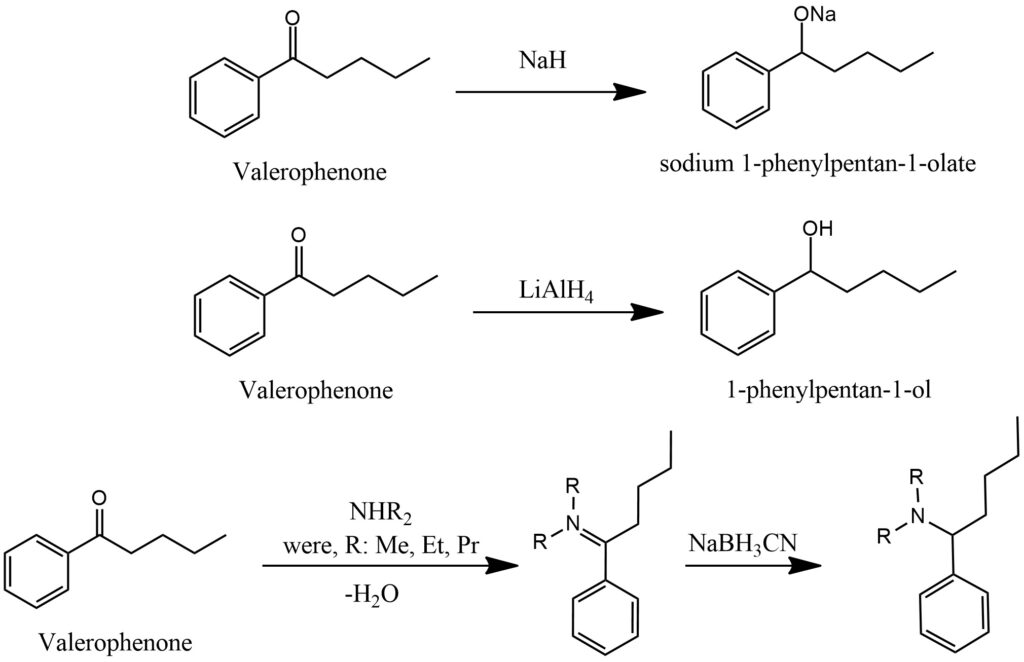
Alpha-bromination of ketones occurs by the addition of molecular bromine (Br2) or bromine compounds to the alpha-position of the ketone group, forming alpha-bromoketones. The reaction can be performed in the presence of catalytic amounts of other substances, such as acids or Lewis acids, which help activate the bromine and provide regioselectivity to the reaction. Alpha-bromoketones are important intermediates in organic synthesis. They can serve as starting materials for further transformations, such as acylation, aldol condensation, and other reactions that lead to the formation of complex molecular structures.Figure 15.

The Willgerodt rearrangement, also known as the Willgerodt reaction, is an organic reaction that converts an aryl alkyl ketone, alkyne, or alkene into the corresponding amide. This reaction is named after the German chemist Conrad Willgerodt, who first reported it. The Willgerodt rearrangement is typically carried out using ammonium polysulfide (NH4)2Sx as the reagent. The reaction proceeds through several steps, starting with the formation of an intermediate thioamide. This thioamide then undergoes rearrangement and subsequent hydrolysis to yield the desired amide product. It is worth noting that the Willgerodt rearrangement is a complex reaction with several possible pathways and side reactions, and careful optimization of reaction conditions is often required to achieve the desired outcome. Figure 16.
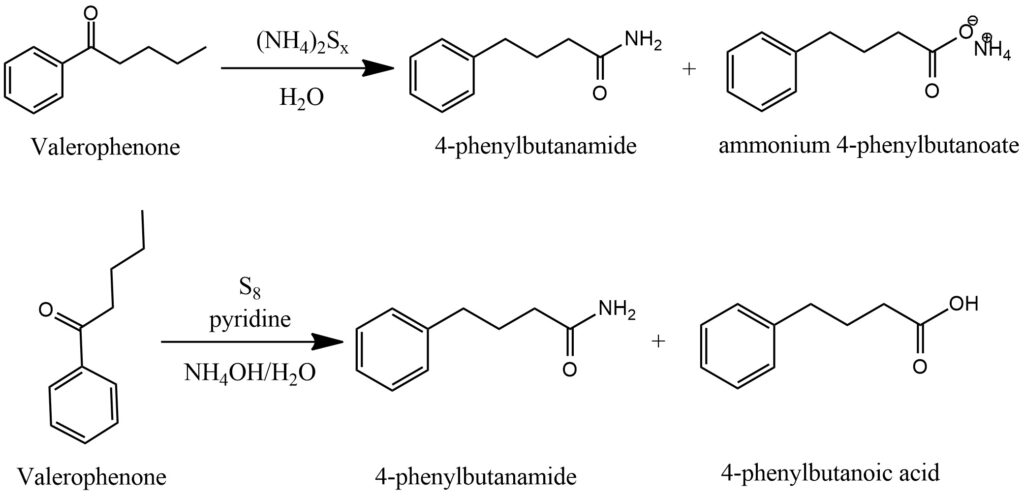
The Baeyer-Villiger oxidation is an organic reaction that converts a ketone or cyclic ketone into an ester or lactone, respectively, using peroxyacids or peroxides as oxidizing agents. This reaction is named after Adolf von Baeyer and Victor Villiger, who independently discovered this transformation. In the Baeyer-Villiger oxidation, the ketone substrate undergoes reaction with a peroxyacid or peroxide, such as peracetic acid (CH3CO3H) or hydrogen peroxide (H2O2), in the presence of an acid or base catalyst. The peroxyacid or peroxide acts as an electrophilic oxidizing agent, attacking the carbonyl group of the ketone and forming a cyclic intermediate known as a peroxycarboxylic acid ester. This intermediate subsequently rearranges, with migration of an alkyl or aryl group, to generate the desired ester or lactone product. Figure 17.

α-PVP synthesis from 2-Bromovalerophenone [16, 17]. Figure 18.
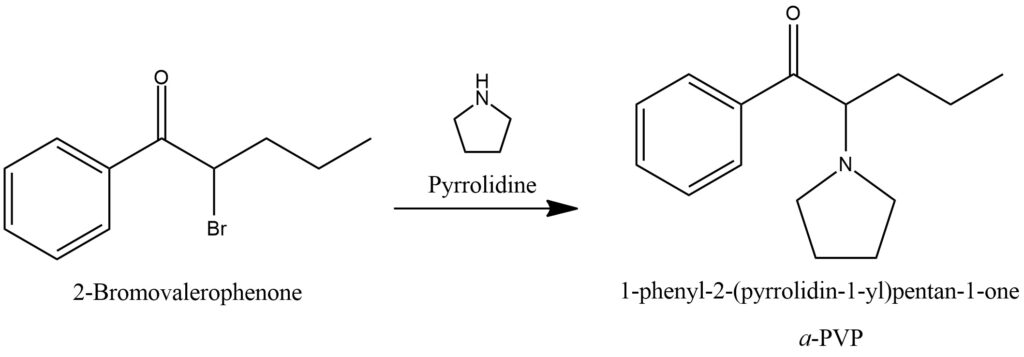
Synthesis of Valerophenone [19, 20]
Valerophenone, also known as 1-phenyl-1-pentanone, is commonly prepared by the acylation of benzene using valeryl chloride through a reaction known as the Friedel-Crafts acylation.
In the Friedel-Crafts acylation, benzene acts as a nucleophile and reacts with valeryl chloride in the presence of a Lewis acid catalyst, typically aluminum chloride (AlCl3) or ferric chloride (FeCl3). The Lewis acid activates the valeryl chloride by forming a complex with it, making it more reactive towards benzene. The benzene molecule then attacks the electrophilic carbonyl carbon of the valeryl chloride, leading to the substitution of a hydrogen atom in benzene with the valeryl group. The reaction proceeds through a series of steps, involving the formation of a carbocation intermediate and subsequent rearrangement. The final product of the reaction is valerophenone, where the valeryl group is attached to the benzene ring. Figure 19.

Conclusion
Valerophenone is a typical representative of aromatic ketones, displaying all the characteristic properties of ketones. Moreover, valerophenone can serve as a precursor for the synthesis of α-PVP (alpha-pyrrolidinopentiophenone) via 2-bromovalerophenone. By employing appropriate reaction conditions and reagents, valerophenone can be transformed into α-PVP, which is a derivative of valerophenone. It is also worth noting that valerophenone can be a derivative of trifluoroacetic acid (TFA). In summary, valerophenone is an important and useful compound in organic chemistry that can be utilized for the synthesis of various compounds, including α-PVP, through appropriate chemical transformations and reactions.
Bibliography
- https://en.wikipedia.org/wiki/Valerophenone
- https://pubchem.ncbi.nlm.nih.gov/compound/66093
- https://www.chemspider.com/Chemical–Structure.59482.html
- https://www.ebi.ac.uk/chebi/searchId.do?chebiId=CHEBI:36812
- https://www.biosynth.com/p/FV173268/1009-14-9-valerophenone
- https://en.wikipedia.org/wiki/Darzens_reaction
- https://en.wikipedia.org/wiki/Ketone
- https://en.wikipedia.org/wiki/Imine
- https://en.wikipedia.org/wiki/Hemiacetal
- https://en.wikipedia.org/wiki/Carbonyl_reduction#Aldehyde_and_ketone_reduction
- https://en.wikipedia.org/wiki/%CE%91-Halo_ketone
- https://en.wikipedia.org/wiki/Haloform_reaction
- https://en.wikipedia.org/wiki/Willgerodt_rearrangement
- https://en.wikipedia.org/wiki/Baeyer%E2%80%93Villiger_oxidation
- https://en.wikipedia.org/wiki/Alpha–Pyrrolidinopentiophenone
- https://bbgate.com/media/%CE%B1-pvp–mdpv–synthesis–from-2-bromovalerophenone.47/
- https://bbgate.com/threads/alpha–pvp–synthesis-1-10kg–scale–complete–video–tutorial.12/
- https://en.wikipedia.org/wiki/Pyrrolidine
- Milstein, D.; Stille, J. K. A general, selective, and facile method for ketone synthesis from acid chlorides and organotin compounds catalyzed by palladium. Journal of the American Chemical Society, 1978, 100, 11, pp. 3636–3638. doi:10.1021/ja00479a077 https://pubs.acs.org/doi/abs/10.1021/ja00479a077
- https://en.wikipedia.org/wiki/Pentanoyl_chloride


